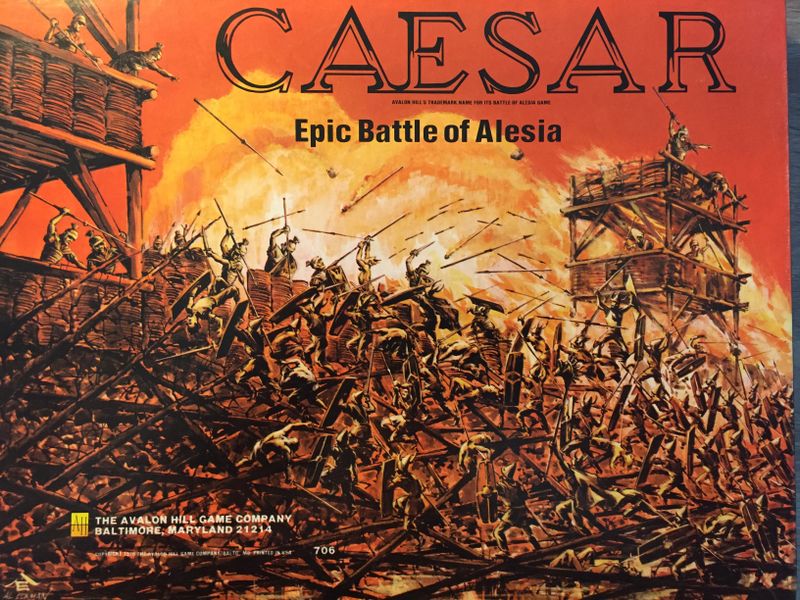Caesar: Epic Battle of Alesia (1976) Board Game
Brief History and Background Information for Caesar: Epic Battle of Alesia
Caesar: Epic Battle of Alesia is a board game that was first released in 1976. The game focuses on the epic battle that took place in 52 BC between Julius Caesar and the Gauls led by Vercingetorix at the fortified city of Alesia. The game is designed by Robert Bradley and features artwork by a team of talented artists.
Game Components of Caesar: Epic Battle of Alesia
- Game Board
- Rulebook
- Counters representing different military units
- Dice
How To Setup Caesar: Epic Battle of Alesia
- Place the game board in the center of the table.
- Each player chooses a side to play as – either Caesar’s Roman forces or Vercingetorix’s Gauls.
- Set up the military units according to the rules outlined in the rulebook.
- Roll to determine who goes first.
Gameplay Mechanics and Game Objective
The gameplay of Caesar: Epic Battle of Alesia revolves around area movement, dice rolling, grid movement, hexagon grid, and hidden movement mechanics. The objective of the game is to strategically outmaneuver and defeat your opponent’s forces in the battle of Alesia.
Player Experience
Pros
- Deep historical theme that immerses players in the ancient battle
- Strategic gameplay that challenges players to think tactically
- Engaging mechanics that keep players on their toes
Cons
- Lengthy playtime of 6 hours may not be suitable for all players
- Steep learning curve for beginners
- Limited replayability once players have mastered strategies
Personal Thoughts on Caesar: Epic Battle of Alesia
Overall, Caesar: Epic Battle of Alesia is a solid wargame that offers a deep dive into the historical events of the battle of Alesia. The game’s components are well-designed and the artwork is visually appealing. However, the lengthy playtime and steep learning curve may deter some players from fully enjoying the game. In terms of pricing and availability, the game may be difficult to find as it is a self-published title. There are alternative wargames on the market that may offer a similar experience for players who are interested in this genre. Ultimately, whether Caesar: Epic Battle of Alesia is worth your time will depend on your interest in ancient history and tactical wargames. Players who enjoy strategic challenges and historical themes will likely find this game to be a worthwhile addition to their collection. On the other hand, those who prefer shorter playtimes or lighter gameplay may want to skip this title.
Game Components of Caesar: Epic Battle of Alesia
How To Setup Caesar: Epic Battle of Alesia
The setup involves placing Roman counters outside Alesia, with strategic advantages for placing them along the fortification lines. The Gallic player places some counters inside Alesia, including Vercingetorix, and keeps the remainder off-board. This initial placement sets the stage for the double siege scenario, where Romans face both inward and outward threats.
Gameplay Mechanics and Game Objective
Player Experience
**Caesar: Epic Battle of Alesia** offers a deeply strategic and tactical experience, with players facing complex decisions under pressure. The game’s design ensures that Roman troops cannot defend everywhere at once, leading to a fierce struggle of sudden attacks and well-thought-out strategies. The numerical superiority of the Gauls is balanced by the strategic advantage of the Roman fortifications, making each side’s victory dependent on skillful play.
Pros
Cons
Personal Thoughts on Caesar: Epic Battle of Alesia
**Caesar: Epic Battle of Alesia** is ideal for fans of historical wargames and those who enjoy complex strategic gameplay. It is particularly suited for players who appreciate the intricacies of ancient battles and are willing to invest time in understanding the game’s mechanics. Despite its complexity, the game offers a rewarding experience that recreates one of the most pivotal battles in history.
We are supported by our audience. When you purchase through links on our site, we may earn an affiliate commission, at no extra cost for you. Learn more.

